
Molecular nanotechnology (MNT) is a technology based on the ability to build structures to complex, atomic specifications by means of mechanosynthesis. This is distinct from nanoscale materials. Based on Richard Feynman's vision of miniature factories using nanomachines to build complex products, this advanced form of nanotechnology would make use of positionally-controlled mechanosynthesis guided by molecular machine systems. MNT would involve combining physical principles demonstrated by biophysics, chemistry, other nanotechnologies, and the molecular machinery of life with the systems engineering principles found in modern macroscale factories.

Sumio Iijima is a Japanese physicist and inventor, often cited as the inventor of carbon nanotubes. Although carbon nanotubes had been observed prior to his "invention", Iijima's 1991 paper generated unprecedented interest in the carbon nanostructures and has since fueled intense research in the area of nanotechnology.

Armand Paul Alivisatos is an American chemist who serves as the 14th president of the University of Chicago. He is a pioneer in nanomaterials development and an authority on the fabrication of nanocrystals and their use in biomedical and renewable energy applications. He was ranked fifth among the world's top 100 chemists for the period 2000–2010 in the list released by Thomson Reuters.

George David William Smith FRS, FIMMM, FInstP, FRSC, CEng is a materials scientist with special interest in the study of the microstructure, composition and properties of engineering materials at the atomic level. He invented, together with Alfred Cerezo and Terry Godfrey, the Atom-Probe Tomograph in 1988.

The Spanish National Research Council is the largest public institution dedicated to research in Spain and the third largest in Europe. Its main objective is to develop and promote research that will help bring about scientific and technological progress, and it is prepared to collaborate with Spanish and foreign entities in order to achieve this aim.
The history of nanotechnology traces the development of the concepts and experimental work falling under the broad category of nanotechnology. Although nanotechnology is a relatively recent development in scientific research, the development of its central concepts happened over a longer period of time. The emergence of nanotechnology in the 1980s was caused by the convergence of experimental advances such as the invention of the scanning tunneling microscope in 1981 and the discovery of fullerenes in 1985, with the elucidation and popularization of a conceptual framework for the goals of nanotechnology beginning with the 1986 publication of the book Engines of Creation. The field was subject to growing public awareness and controversy in the early 2000s, with prominent debates about both its potential implications as well as the feasibility of the applications envisioned by advocates of molecular nanotechnology, and with governments moving to promote and fund research into nanotechnology. The early 2000s also saw the beginnings of commercial applications of nanotechnology, although these were limited to bulk applications of nanomaterials rather than the transformative applications envisioned by the field.
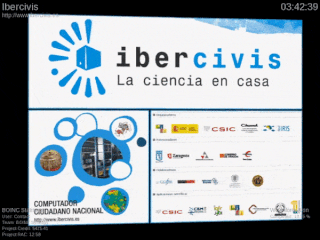
Ibercivis was a volunteer computing platform which allows internet users to participate in scientific research by donating unused computer cycles to run scientific simulations and other tasks. The original project, which became operational in 2008, was a scientific collaboration between the Portuguese and Spanish governments, but it is open to the general public and scientific community, both within and beyond the Iberian Peninsula. The project's name is a portmanteau of Iberia and the Latin word civis, meaning 'citizen'.
The Catalan Institute of Nanotechnology (ICN) was established in 2003 by the Catalan government and the Autonomous University of Barcelona (UAB), with the aim of attracting skilled international researchers to create a hub for nanoscience and nanotechnology research.
Amanda Susan Barnard is an Australian theoretical physicist working in predicting the real world behavior of nanoparticles using analytical models and supercomputer simulations and applied machine learning. Barnard is a pioneer in the thermodynamic cartography of nanomaterials, creating nanoscale phase diagrams relevant to different environmental conditions, and relating these to structure/property maps. Her current research involves developing and applying statistical methods and machine/deep learning in nanoscience and nanotechnology, and materials and molecular informatics. In 2014 she became the first person in the southern hemisphere, and the first woman, to win the Feynman Prize in Nanotechnology, which she won for her work on diamond nanoparticles.

Margarita Salas Falgueras, 1st Marchioness of Canero was a Spanish scientist, medical researcher, and author in the fields of biochemistry and molecular genetics.

Interdisciplinary Nanoscience Center (iNANO), is an interdisciplinary research and teaching center for nanoscience at Aarhus University in Aarhus, Denmark. The center was founded in 2002 and has been headquartered in The iNano House since 2012.
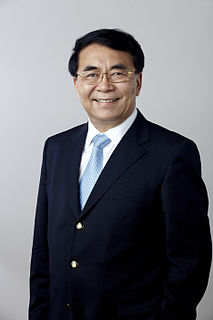
Bai Chunli is a Chinese physical chemist, nanotechnology scientist, and academic administrator. He is a professor at the Chinese Academy of Sciences Institute of Chemistry and former president of the Chinese Academy of Sciences. He also serves as president of The World Academy of Sciences, co-chairman of the China Association for Science and Technology, and president of the University of the Chinese Academy of Sciences.

IMDEA is a project founded by the Madrid Regional Government, included in the IV Regional Plan of Scientific Research and Technological Innovation 2005-2008 (PRICIT), for the purpose of setting up advanced research centers and higher education and training in the Community of Madrid. Between 2006 and 2008 the project created nine IMDEA Institutes of which two were closed.
IMDEA Networks Institute is one of the seven IMDEA Institutes created by the Madrid Regional Government as part of the IV Regional Plan of Scientific Research and Technological Innovation 2005-2008 (PRICIT), of which the aim is to put in place advanced research centers and higher education and training in the Community of Madrid. IMDEA Networks Institute is engaged in cutting-edge science in all areas of networking. It was legally constituted under Spanish law at the end of 2006 as a public, not-for-profit Foundation. The full, registered name of the institute is Fundación IMDEA Networks. IMDEA Networks Institute, based in Madrid (Spain), actively collaborates with the Higher Polytechnic School of Universidad Carlos III de Madrid.
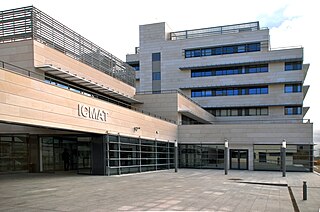
The Institute of Mathematical Sciences is a mixed institute affiliated to the Spanish National Research Council (CSIC) in partnership with three public universities: the Autonomous University of Madrid (UAM), the Charles III University of Madrid (UC3M) and the Complutense University of Madrid (UCM). Founded in 2010, the ICMAT headquarters is located in the Cantoblanco Campus in Northern Madrid.
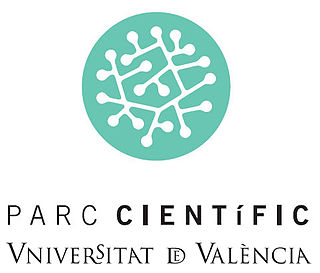
The University of Valencia Science Park provides spaces and services to companies resulting from university research, –spin-off–, and other companies and R & D departments with content related to the innovative nature of the PCUV.
The International Institute for Nanotechnology (IIN) was established by Northwestern University in 2000. It was the first institute of its kind in the United States and is one of the premier nanoscience research centers in the world. Today, the IIN represents and unites more than $1 billion in nanotechnology research, educational programs, and supporting infrastructure.

The Catalan Institute of Nanoscience and Nanotechnology (ICN2) is a foundation located on the campus of the Autonomous University of Barcelona (UAB) whose mission is to promote interdisciplinary research in nanoscience and nanotechnology. In addition to research activities, the ICN2 provides training for researchers, education programs and services to industry and the scientific community.
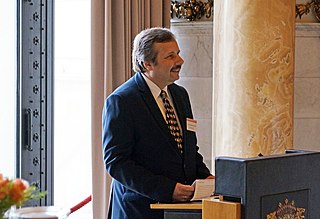
Roland Wiesendanger is a German physicist, specializing in nanoscience. Since 1993 he has been a full professor at the University of Hamburg, Germany.















